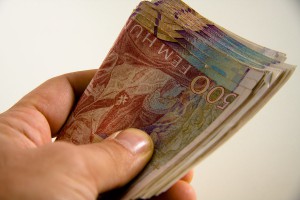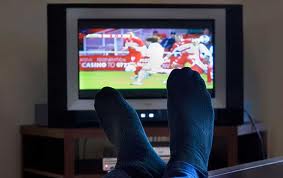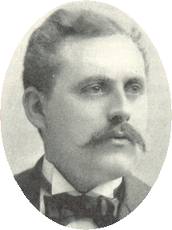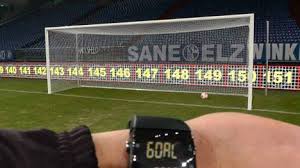Martin Alsiö
Master of Social Science, Independent Football Historian

What are the biggest mistakes of all time made in Swedish football? And how can we distinguish major from minor mistakes?
The Realists in Swedish football often claim that a small country with some nine million inhabitants should not hope too much for long-term success for either club or national team, men’s or women’s football. Unfortunately we have never utilized all Swedes or even the part that’s interested in football, to develop the sport. Instead, we have made great efforts to prevent many groups from enriching the gane.
Let us here ignore such minor mishaps as Kennet Andersson’s missed penalty in his infamous yellow shoes in a World Cup qualifier in 1996, Roland Nilsson’s sudden blindness in the Euro 2000, and Olof Mellberg’s sudden impulse to play handball in the World Cup qualifiers in 2006 against Croatia. Those are momentary mistake that cannot be foreseen, extrapolated or understood outside of its moment.
This column is about the major mistakes. And they were major mainly because they were systematically repeated over and over again. These mistakes were the kind that was defended by powerful interests, both at high and low levels. They reduced the opportunities for Swedish football for years, and afterwards it’s often hard to find out who were responsible for them – although there were many who stood by them long they were made. Some mistakes are so fresh that they are still defended, often with emotional rather than rational arguments. They are – in short – the 10 biggest mistakes in Swedish Football History. Let’s go through them from the shortest to the longest to remember what they were all about!
10) The Professionals Problem, 35 years (1932–1967)
 When the international football federation FIFA dropped their definition of amateur football in 1932 (during the worst depression of the century) each country was allowed to make their own definitions. Western and central European countries favored an openly professional, but regulated, football – while Eastern Europe came to choose a form of state amateurs. Sweden however continued to ban professional football and continued with strict controls and disqualifications. Malmö FF football club was kicked out of the top league in the spring of 1934 for paying too high salaries. Several footballers were forced to go abroad to make a living from their sport. They were met with excommunication from both the national team and the elite clubs during the first 25 years of this period. The problem was dissolved when the Swedish Sports Confederation in 1967 gave up its amateur definitions, which eventually opened up for professional football in Sweden.
When the international football federation FIFA dropped their definition of amateur football in 1932 (during the worst depression of the century) each country was allowed to make their own definitions. Western and central European countries favored an openly professional, but regulated, football – while Eastern Europe came to choose a form of state amateurs. Sweden however continued to ban professional football and continued with strict controls and disqualifications. Malmö FF football club was kicked out of the top league in the spring of 1934 for paying too high salaries. Several footballers were forced to go abroad to make a living from their sport. They were met with excommunication from both the national team and the elite clubs during the first 25 years of this period. The problem was dissolved when the Swedish Sports Confederation in 1967 gave up its amateur definitions, which eventually opened up for professional football in Sweden.
9) The Radio & TV Problem, 36 years (1925–1961)
 For more than three decades football leaders had this great fear that allowing broadcasts on radio or television would reduce attendance numbers on stadiums (and therefore income). While leaders demanded strict amateur ideals from the players they were at deeply concerned about making money for themselves. Only with the first radio program Sportextra (1961) broadcasts from the premier division, Allsvenskan [The All-Swedish League], and later the television program Tipsextra (1969), Swedish football fans were allowed to nurture their football passion without actually being on the site.
For more than three decades football leaders had this great fear that allowing broadcasts on radio or television would reduce attendance numbers on stadiums (and therefore income). While leaders demanded strict amateur ideals from the players they were at deeply concerned about making money for themselves. Only with the first radio program Sportextra (1961) broadcasts from the premier division, Allsvenskan [The All-Swedish League], and later the television program Tipsextra (1969), Swedish football fans were allowed to nurture their football passion without actually being on the site.
8) The Substitution Problem, 41 years (1924–1965)
 How to deal with injured players and possible substitutes was long a major problem. The solution had been found and used in Allsvenskan already in the period 1920–1923. But when some teams made a habit out of simulating injuries (to be able to substitute tired players) that solution was banned. This led to four decades with matches where an injured player in one team meant an opponent less for the other team. The reason that the Substitution Problem lived on for so long was closely linked to the cynical amateur ideals. Only when England in 1965 introduced the old system (which had been used in Sweden from 1920 to 1923) with the possibility to exchange players in case of injury, it suddenly became legitimate to (re)introduce the same system in Sweden.
How to deal with injured players and possible substitutes was long a major problem. The solution had been found and used in Allsvenskan already in the period 1920–1923. But when some teams made a habit out of simulating injuries (to be able to substitute tired players) that solution was banned. This led to four decades with matches where an injured player in one team meant an opponent less for the other team. The reason that the Substitution Problem lived on for so long was closely linked to the cynical amateur ideals. Only when England in 1965 introduced the old system (which had been used in Sweden from 1920 to 1923) with the possibility to exchange players in case of injury, it suddenly became legitimate to (re)introduce the same system in Sweden.
7) The Being Swedish Problem, 43 years (1931–1974)
 For over four decades, no foreign players could compete in national and regional championships (“SM” and “DM”) in Swedish football (as a product of xenophobic social ideals). In theory, there was of course the option to apply for Swedish citizenship and then try to win a place in an elite team. In practice this was, as far as I know, never attempted. Instead Swedish football, especially after the Second World War had transmuted into the Cold War, found itself with a lot of foreign players with different skill level that were playing in Division 2 and below. Paradoxically, the elite teams were recruiting large amounts of foreign coaches at the same time. The system was softened slowly, starting in 1974, when the former exchange student Ronnie Powell (pictured), was allowed to make his debut in Allsvenskan. He was the first foreign player on Swedish elite level since the top league gained status as official Swedish championship in 1931, at which time foreigners were banned from participating.
For over four decades, no foreign players could compete in national and regional championships (“SM” and “DM”) in Swedish football (as a product of xenophobic social ideals). In theory, there was of course the option to apply for Swedish citizenship and then try to win a place in an elite team. In practice this was, as far as I know, never attempted. Instead Swedish football, especially after the Second World War had transmuted into the Cold War, found itself with a lot of foreign players with different skill level that were playing in Division 2 and below. Paradoxically, the elite teams were recruiting large amounts of foreign coaches at the same time. The system was softened slowly, starting in 1974, when the former exchange student Ronnie Powell (pictured), was allowed to make his debut in Allsvenskan. He was the first foreign player on Swedish elite level since the top league gained status as official Swedish championship in 1931, at which time foreigners were banned from participating.
6) The Hooligan Problem, 45 years (1970–)
 The combination of football and violence is a very old phenomenon that is related to the game’s violent history in the British public schools in the mid-1800s (see for example Richard Sanders excellent Beastly Fury, 2009). In the early years football violence was viewed as a group dynamics problem for the crowd as a whole. This approach, however, changed in the beginning of the 1960s, when the English media and then the supporter clubs began to individualize football violence (which therefore could be cleaned out and removed), instead of a structural group problem (which is a lot harder to deal with). In connection with certain events in Swedish football in the fall of 1970, the first Swedish hooligans were invented. The hooligan problem dealt with, if not solved, in several locations around the world. In Sweden, though, it is still a practical mistake we continue to make with large blinders on.
The combination of football and violence is a very old phenomenon that is related to the game’s violent history in the British public schools in the mid-1800s (see for example Richard Sanders excellent Beastly Fury, 2009). In the early years football violence was viewed as a group dynamics problem for the crowd as a whole. This approach, however, changed in the beginning of the 1960s, when the English media and then the supporter clubs began to individualize football violence (which therefore could be cleaned out and removed), instead of a structural group problem (which is a lot harder to deal with). In connection with certain events in Swedish football in the fall of 1970, the first Swedish hooligans were invented. The hooligan problem dealt with, if not solved, in several locations around the world. In Sweden, though, it is still a practical mistake we continue to make with large blinders on.
5) The Swedish Football History Problem, 51 years (1930–1981)
 When the famed football leader Wilhelm Friberg at the end of his life went on to summarize Swedish football history, he was eager to boost his own influence and dismiss the importance of his colleagues, especially his predecessors. Friberg pretended that his team (he was co-founder of Örgryte IS football club) was the very first Swedish team to play football, he suggested that any predecessor probably would have been foreign, and he failed to mention the very close Swedish colleague who gave him the idea to pick up the sport. The result was a highly tendentious, severely criticized and somewhat absurd history of 19th century football. However, thanks to Friberg’s excellent reputation within the Swedish Football Association (he was its chairman for nine years), his version got national distribution. Many of the myths were crushed by the local PE teacher Roland Jerneryd in his fine book Hur idrotten kom till stan [How sports came to town], 1981. But as Friberg’s fame far exceeds Jerneryd’s many football historians still make the mistake of treating Friberg’a propaganda as historical truth.
When the famed football leader Wilhelm Friberg at the end of his life went on to summarize Swedish football history, he was eager to boost his own influence and dismiss the importance of his colleagues, especially his predecessors. Friberg pretended that his team (he was co-founder of Örgryte IS football club) was the very first Swedish team to play football, he suggested that any predecessor probably would have been foreign, and he failed to mention the very close Swedish colleague who gave him the idea to pick up the sport. The result was a highly tendentious, severely criticized and somewhat absurd history of 19th century football. However, thanks to Friberg’s excellent reputation within the Swedish Football Association (he was its chairman for nine years), his version got national distribution. Many of the myths were crushed by the local PE teacher Roland Jerneryd in his fine book Hur idrotten kom till stan [How sports came to town], 1981. But as Friberg’s fame far exceeds Jerneryd’s many football historians still make the mistake of treating Friberg’a propaganda as historical truth.
4) The Being Male Problem, 54 years (1918–1972)
 That football should be a sport exclusively for men was a gender ideal that too many men and too few women fought about for over five decades. The first official football match between two women’s teams in Sweden was played in 1918 at Aspuddens IP in southern Stockholm. It would take all of 54 years until men in leading positions in Swedish football had matured enough to allow the bravest and most determined women to play in a Swedish championship. The corresponding time span for men had been 18 years (from the first public match in 1878 to a Swedish championship in 1896), but then the men of that era never met with that kind of gender resistance. Women in football were regarded as a problem, allegedly because they risked injury (horrible thought!), but primarily because they challenged the self-evident truth of boys and men that football is an exclusively male sport. The whole situation was resolved when men were given the opportunity for professional football with players’ contracts and higher wages, which made it easier to accept amateur women players. The differences between gender ideals could be maintained.
That football should be a sport exclusively for men was a gender ideal that too many men and too few women fought about for over five decades. The first official football match between two women’s teams in Sweden was played in 1918 at Aspuddens IP in southern Stockholm. It would take all of 54 years until men in leading positions in Swedish football had matured enough to allow the bravest and most determined women to play in a Swedish championship. The corresponding time span for men had been 18 years (from the first public match in 1878 to a Swedish championship in 1896), but then the men of that era never met with that kind of gender resistance. Women in football were regarded as a problem, allegedly because they risked injury (horrible thought!), but primarily because they challenged the self-evident truth of boys and men that football is an exclusively male sport. The whole situation was resolved when men were given the opportunity for professional football with players’ contracts and higher wages, which made it easier to accept amateur women players. The differences between gender ideals could be maintained.
3) The Competition Problem, 57 years (1896–1953)
 In a European perspective, Swedish football very early to formed a national league, Allsvenskan, in 1910. But over time it became increasingly evident that what was called national, in practice, was not at all nationwide, but limited to wealthy clubs in central and southern Sweden. Only in 1953 the island of Gotland and all the northern parts of the country were connected to the rest of the league system. Then Swedish football had already gone 57 years with mutilated Swedish championships. The knock-out competition Svenska Cupen [The Swedish Cup] became nationwide twelve years before the league system. The solution came in part in the form of improved air transport, but was above all the result of a long regional political fight to unite the country around the same football competitions.
In a European perspective, Swedish football very early to formed a national league, Allsvenskan, in 1910. But over time it became increasingly evident that what was called national, in practice, was not at all nationwide, but limited to wealthy clubs in central and southern Sweden. Only in 1953 the island of Gotland and all the northern parts of the country were connected to the rest of the league system. Then Swedish football had already gone 57 years with mutilated Swedish championships. The knock-out competition Svenska Cupen [The Swedish Cup] became nationwide twelve years before the league system. The solution came in part in the form of improved air transport, but was above all the result of a long regional political fight to unite the country around the same football competitions.
2) The Allsvenskan History Problem, 77 years (1934–2011)
 The sports writer, referee and board member of the Swedish Football Association, Rudolf Eklöw (pictured), succeeded in the 1930s to revise Allsvenskan’s history, in the spirit of Wilhelm Friberg (see mistake 5). Eklöw sliced off the first 14 years, in order to promote his own calendar Fotbollboken. It was also important that Eklöw’s historic account emphasized the principal role of the Swedish Football Association at the expense of the club organization Föreningen Svenska Serien Division 1 [The Swedish League First Division Association] (today the Svensk Elitfotboll) and the earliest organized supporter groups in the creation of Allsvenskan, its structure and popularity. Despite several protests from old-timers such as Anton Johanson, Carl Linde and Sven Lindqvist, the Eklöw history was accepted by the Swedish FA, and became the official version. In the spring of 2011 my own bestseller 100 år med allsvensk fotboll (One hundred years of All-Swedish Football] was published, which rediscovers the whole 100 years of the Allsvenskan football league from 1910, recreated from contemporary primary sources. Despite such undisputable facts this is still a contentious issue and some football historians to this day prefer the incorrect Eklöw propaganda. The result is that Swedish football’s most popular event, Allsvenskan, paradoxically is still completely misunderstood when it comes to most questions about when, how and why.
The sports writer, referee and board member of the Swedish Football Association, Rudolf Eklöw (pictured), succeeded in the 1930s to revise Allsvenskan’s history, in the spirit of Wilhelm Friberg (see mistake 5). Eklöw sliced off the first 14 years, in order to promote his own calendar Fotbollboken. It was also important that Eklöw’s historic account emphasized the principal role of the Swedish Football Association at the expense of the club organization Föreningen Svenska Serien Division 1 [The Swedish League First Division Association] (today the Svensk Elitfotboll) and the earliest organized supporter groups in the creation of Allsvenskan, its structure and popularity. Despite several protests from old-timers such as Anton Johanson, Carl Linde and Sven Lindqvist, the Eklöw history was accepted by the Swedish FA, and became the official version. In the spring of 2011 my own bestseller 100 år med allsvensk fotboll (One hundred years of All-Swedish Football] was published, which rediscovers the whole 100 years of the Allsvenskan football league from 1910, recreated from contemporary primary sources. Despite such undisputable facts this is still a contentious issue and some football historians to this day prefer the incorrect Eklöw propaganda. The result is that Swedish football’s most popular event, Allsvenskan, paradoxically is still completely misunderstood when it comes to most questions about when, how and why.
1) The Technical Goal-line Help to Referee Problem, 99 years (1916–)
 Already in 1916, the great sports paper Idrottsbladet suggested that football referees should get the help of goal-line cameras to facilitate wise, informed decisions. The debate has popped up at irregular intervals, where the rule-makers defended status quo with a mixture of emotive arguments like “it must not affect the rhythm of the game” to weakly substantiated but more rational arguments like “we cannot afford it (even though we are the world’s richest sports)”. In the autumn of 2013 the English Premier League however finally introduced goal-line technology as an aid to referees, which proved that a technical solution is available. In practice, though, Sweden lags behind, as usual, with about the same blinders as in the case of the hooligan problem.
Already in 1916, the great sports paper Idrottsbladet suggested that football referees should get the help of goal-line cameras to facilitate wise, informed decisions. The debate has popped up at irregular intervals, where the rule-makers defended status quo with a mixture of emotive arguments like “it must not affect the rhythm of the game” to weakly substantiated but more rational arguments like “we cannot afford it (even though we are the world’s richest sports)”. In the autumn of 2013 the English Premier League however finally introduced goal-line technology as an aid to referees, which proved that a technical solution is available. In practice, though, Sweden lags behind, as usual, with about the same blinders as in the case of the hooligan problem.
* * *
So, there they are: Swedish football’s 10 biggest mistakes ever. They have all taken between 35 to 99+ years to correct by changing from an exclusive to an inclusive mode, so my question to the international readership of idrottsforum.org is, are there any similarities to your country’s football history? Or is your country completely different? Please post a comment below od drop me a line and let’s compare notes!
Copyright © Martin Alsiö 2015


